When you are in Podgorica, it is a good idea to spend a day in exploring the Morača Canyon and its monasteries, in particular off-season, when there is less traffic. Just follow the road to Kolašin and Belgrade and it doesn’t take long before the scenery becomes breathtaking.
The highway – one of the most dangerous roads in Montenegro – follows the Morača River into a nearly perpendicular canyon, also called Platije, with barren rocks up to 1000 meters high.
The Morača Monastery is situated at a distance of 46 km from Podgorica, on the right side of the road. We had already visited this place several times, but only recently I learned that the icons in this Monastery belong to the most famous medieval icons of the world. They are mentioned in many foreign books about medieval art and that was a good reason to see them once more.
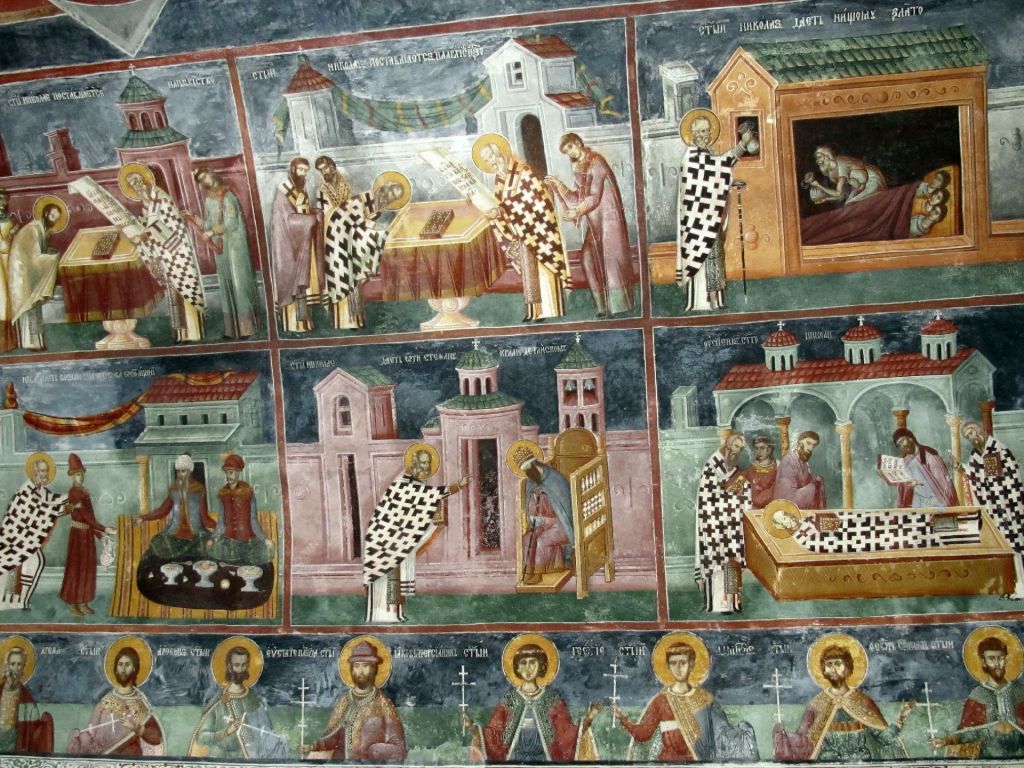 The architecture of the monastery complex is quite simple (photo 1). It consists of the church of the Assumption of the Holy Virgin, the small church of St. Nicholas and the sleeping quarters. Everything is surrounded with a high stone wall. The monastery was built in 1252 by Stefan Nemanja. It was made of special yellow stone that can only be found in an area very far from this place.
The architecture of the monastery complex is quite simple (photo 1). It consists of the church of the Assumption of the Holy Virgin, the small church of St. Nicholas and the sleeping quarters. Everything is surrounded with a high stone wall. The monastery was built in 1252 by Stefan Nemanja. It was made of special yellow stone that can only be found in an area very far from this place.
When we entered the beautiful garden courtyard, we had the feeling as if we stepped back into the 13th century. There were no visitors, so that we could freely admire the beautiful frescoes and icons.
Unfortunately, we were not allowed to take photographs without the written permission of the Serbian-Orthodox Metropolitan Amfilohije. This is a practice we already know from our visits to Macedonia and Serbia, but for instance in Russia and Ukraine, you can buy a photo permit, often at a price that is much higher than the entrance ticket. Wouldn’t that be a good possibility for the church to obtain some additional money for the restoration of the faded external frescoes of this monastery complex?
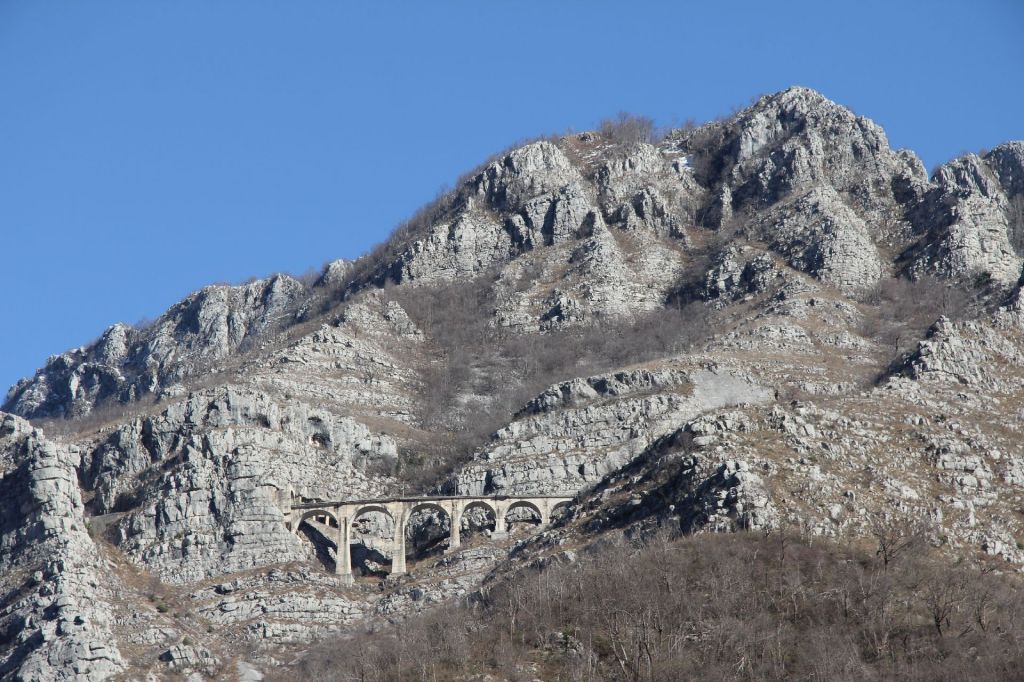 The 13th century fresco “Raven feeds the Prophet Elijah” is the oldest and the most famous fresco of the Morača monastery. Most preserved frescoes date back to the 16th century, but the 17th century frescoes around the main entrance were painted in 1616 by Georgije Mitrofanović, one of the greatest masters of all times. The church’s treasures also include the icon of The Virgin Enthroned with Child, Prophets and Hymnographers (1617), part of the iconostasis, to the left of the sanctuary door. This is really a masterpiece with exceptional colors. But also several other icons in the church belong to the most valuable pieces of icon painting of the Balkans.
The 13th century fresco “Raven feeds the Prophet Elijah” is the oldest and the most famous fresco of the Morača monastery. Most preserved frescoes date back to the 16th century, but the 17th century frescoes around the main entrance were painted in 1616 by Georgije Mitrofanović, one of the greatest masters of all times. The church’s treasures also include the icon of The Virgin Enthroned with Child, Prophets and Hymnographers (1617), part of the iconostasis, to the left of the sanctuary door. This is really a masterpiece with exceptional colors. But also several other icons in the church belong to the most valuable pieces of icon painting of the Balkans.
The faded frescoes around the entrance of the smaller church of St. Nicholas, built three years later, were also painted by Mitrofanović. Fortunately, the beautiful frescoes inside still show their vivid colors (photo 2).
Driving back through the canyon, we could see the railway from Bar to Belgrade, passing high above us (photo 3). We also saw several suspension bridges crossing the green river although they were in a bad shape. I wonder if they could be repaired after the winter?
But we also wanted to visit another monastery called Duga, in the village of Bioče (photo 4). Although there is a road sign, it was not easy to find. We had to turn left beside the Potoci Restaurant (29 km from the Morača Monastery or 17 km from Podgorica), passing an old steel bridge and driving several kilometers until the end of the narrow asphalt road.
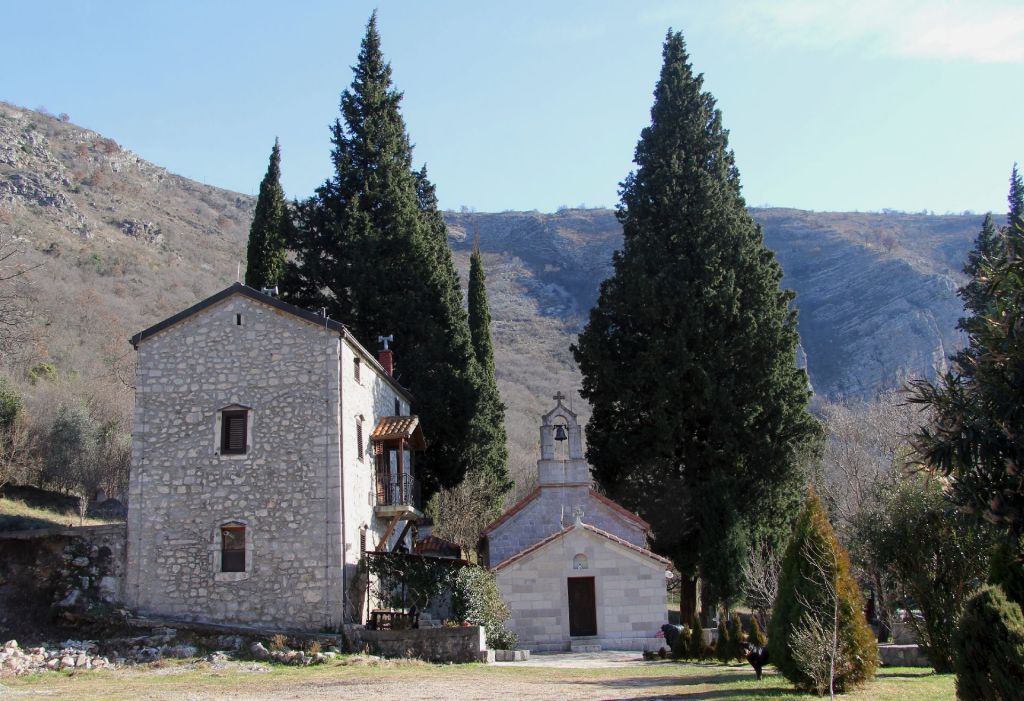 And there it was, the Duga monastery that is even older than the Morača Monastery. The first monastery at this place was also built in the era of the Nemanjić dynasty and was dedicated to the Assumption of the Holy Virgin. In its present form, it was built in 1752 and reconstructed in the nineties of the last century.
And there it was, the Duga monastery that is even older than the Morača Monastery. The first monastery at this place was also built in the era of the Nemanjić dynasty and was dedicated to the Assumption of the Holy Virgin. In its present form, it was built in 1752 and reconstructed in the nineties of the last century.
We were welcomed by a young nun who spoke perfect English. She showed us the church and the magnificent old frescoes, and she told us a lot about her life and her choice to enter the monastery. The thirteen nuns run the vineyards of the property, grow fruit, olives and vegetables and make souvenirs and natural products for visitors. And I can assure you: she seemed to be really happy!
We left the green crystal clear waters of the Morača river (photo 5) and soon entered the city. What a pleasure it is to live in Podgorica, such a central point for making day trips in the surroundings!
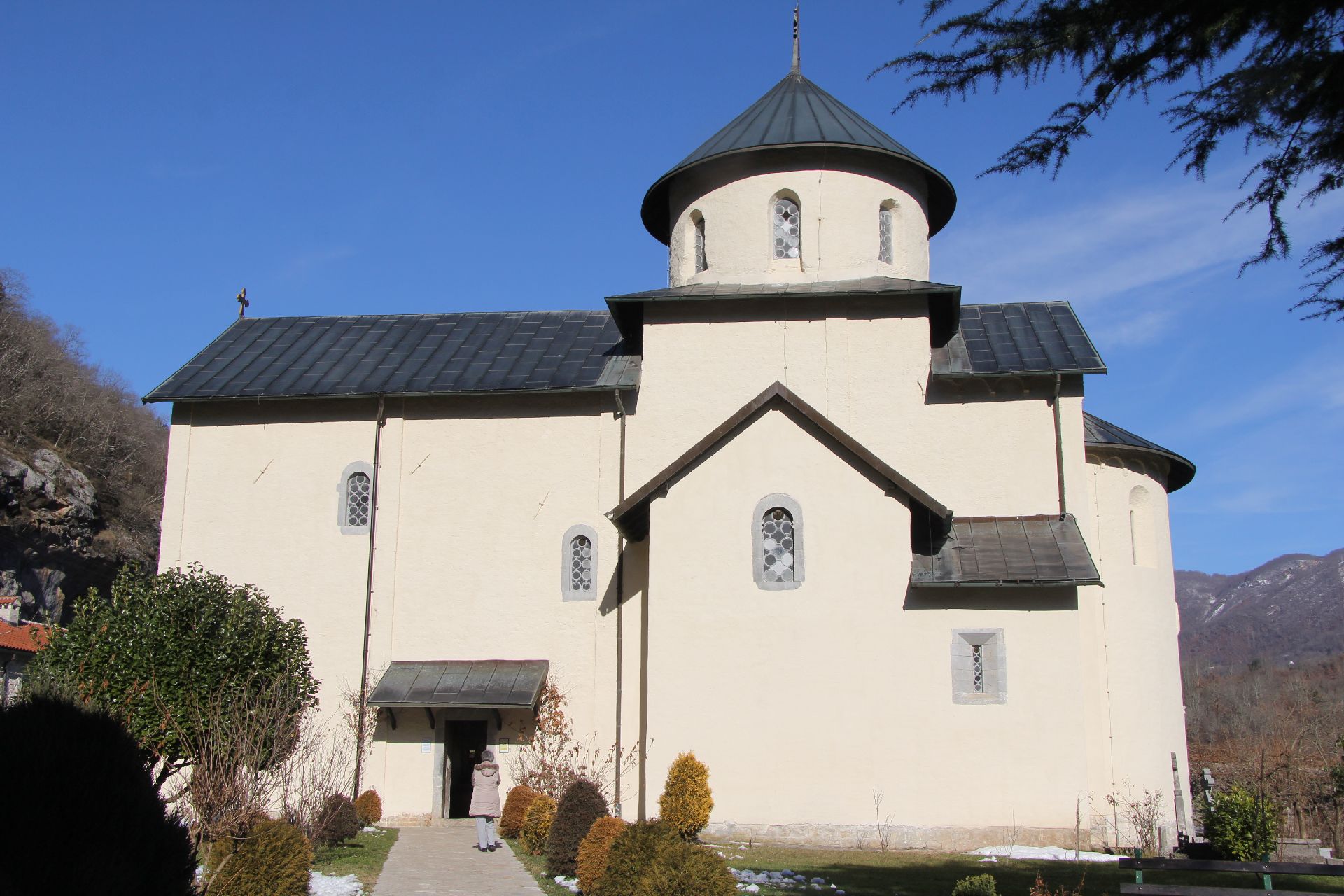
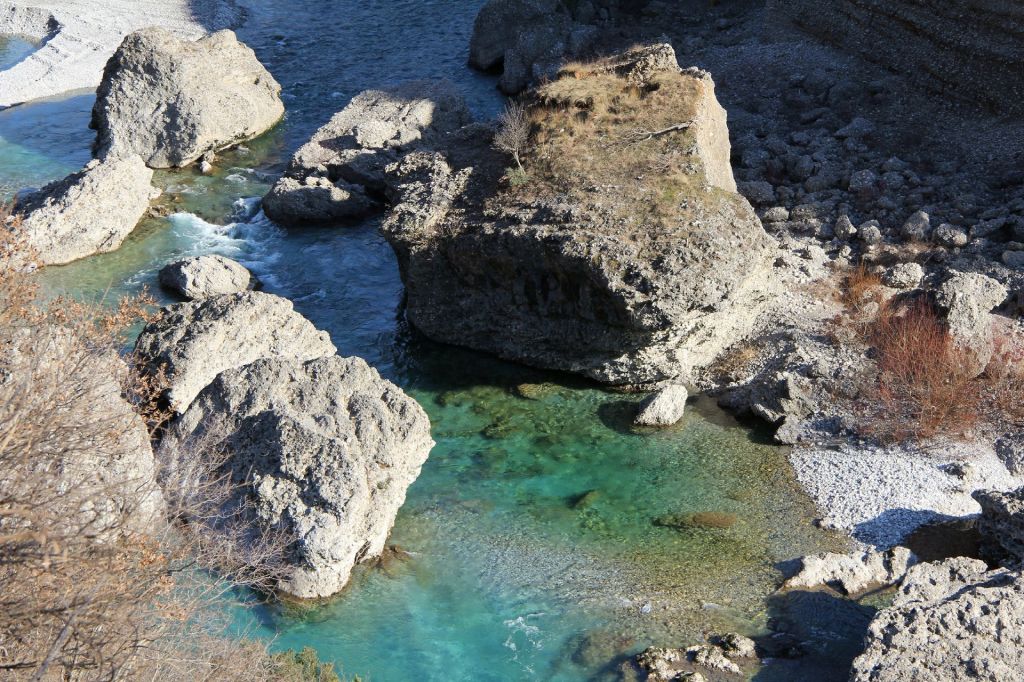
[…] The Morača Monastery, built in 1252 by Stefan Nemanja in typical Byzantine style, is situated at a distance of 46 km from Podgorica. The architecture of the monastery complex is quite simple (photo 7). It consists of the church of the Assumption of the Holy Virgin, the small church of St. Nicholas and the sleeping quarters. When I entered the beautiful garden courtyard for the first time, I got the feeling as if I stepped back into the 13th century. That was also the time when the frescoes were painted; the most famous one is “The Raven feeds the Prophet Elijah”. What impressed me most was the iconostasis. No wonder that the icons in this Monastery belong to the most famous medieval icons of the world; they are mentioned in many foreign books about medieval art. But also the small St. Nicholas church contains frescoes of an astonishing quality and beauty (photo 6). (see also: https://montenegro-for.me/2015/01/monasteries-moraca-canyon/) […]
[…] miss Biogradska Gora National Park. Make a walk around Biogradsko Lake. Visit the medieval Morača monastery. Or maybe you would like to visit Podgorica, the capital of […]